Accessible Trail Adventures for People of All Abilities
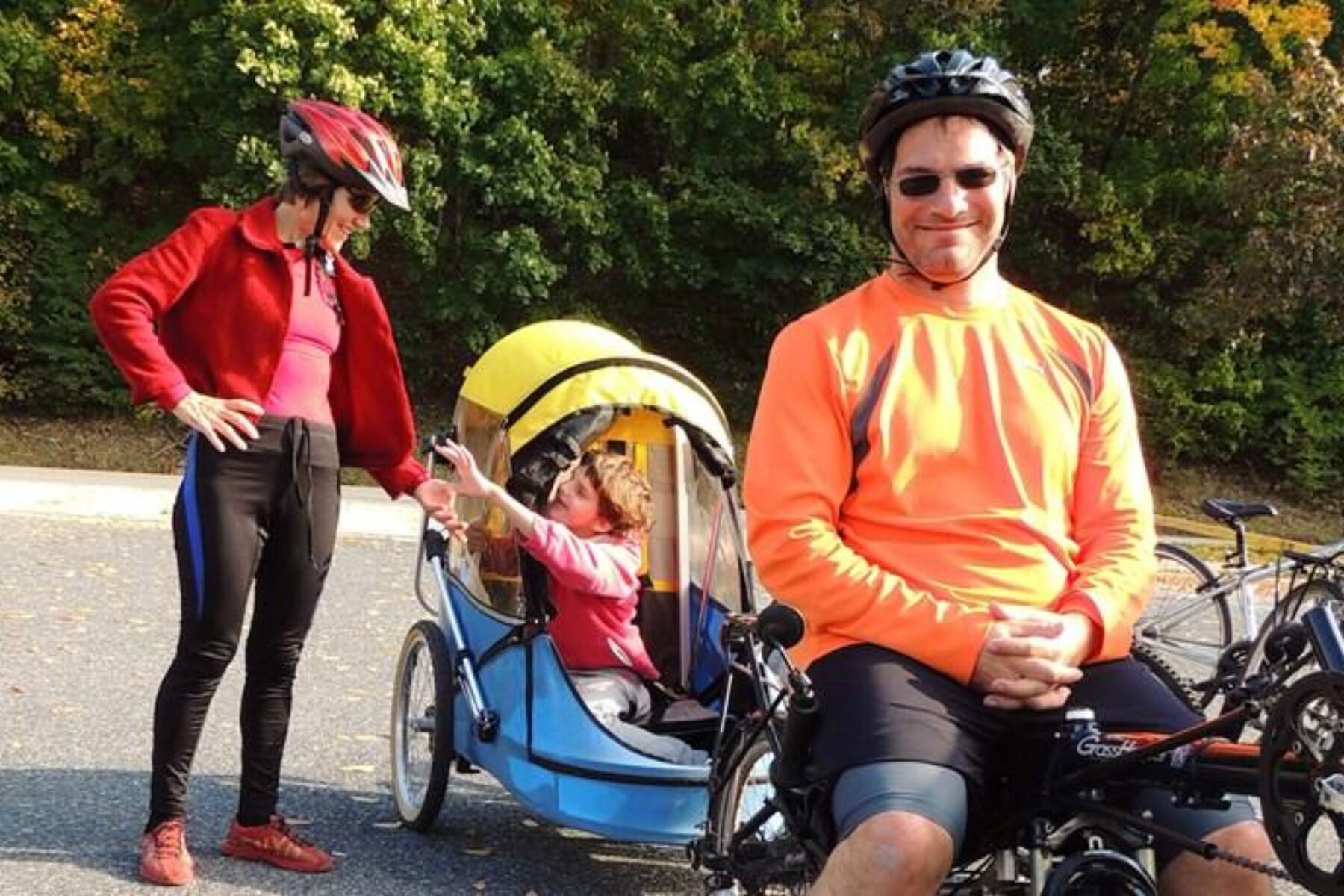
Disclaimer: While RTC typically does not endorse specific biking and trail products, links to equipment recommendations have been provided here to assist parents and caregivers as they explore ways to help loved ones with disabilities experience trails.
Having a child with a disability can turn your life upside down. I first glimpsed that as a psychologist teaching parents of children with autism, but I didn’t really understand until my own daughter Margot was born with significant disabilities.
Margot is now 16. She has significant intellectual disabilities and is nonverbal, has mild cerebral palsy that makes walking challenging, and has a feeding tube. These challenges haven’t stopped Margot, though. They’ve forged her remarkable resilience.
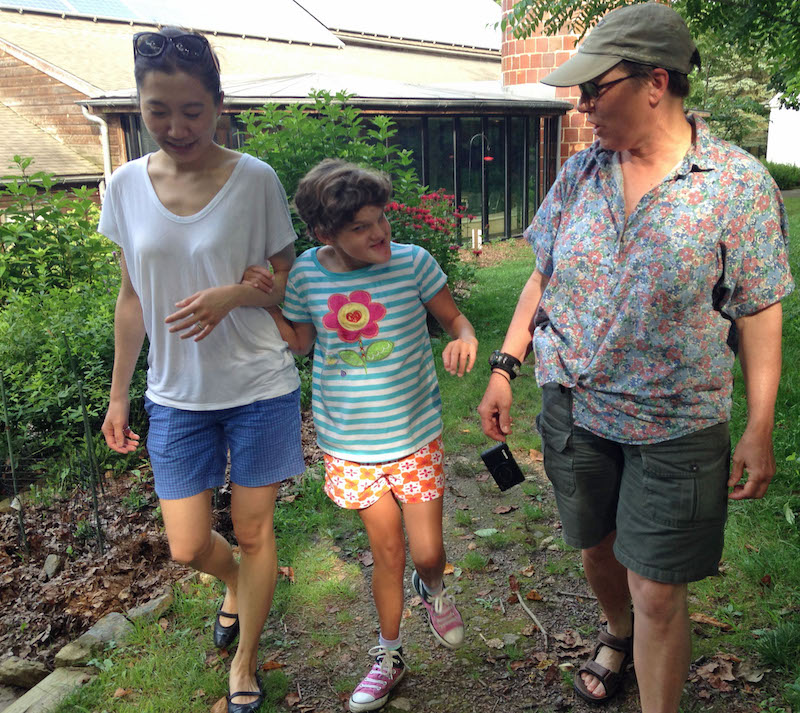
We did not begin with a plan to get Margot on trails; we just wanted her to explore the world beyond the four walls of our home and her classroom. But I distinctly remember when I saw her discover the joys of walking, just after her 8th birthday. It was Christmas in New York, and I was pushing Margot in her stroller down Broadway in a light snow. She had been working hard to walk farther and farther at home and school. So I thought: Let’s see how she does in a completely new environment. She walked slowly and tentatively, but she loved it. When she wasn’t concentrating on her steps, she was eagerly scanning faces in the crowd and laughing as she turned her face up into the snow. And so began the transition from walking as work to walking as an adventure—and then on to different types of trails.
Each new trail fueled her appetite for more adventure. So what have we learned along the way?
1. Begin with little adventures.
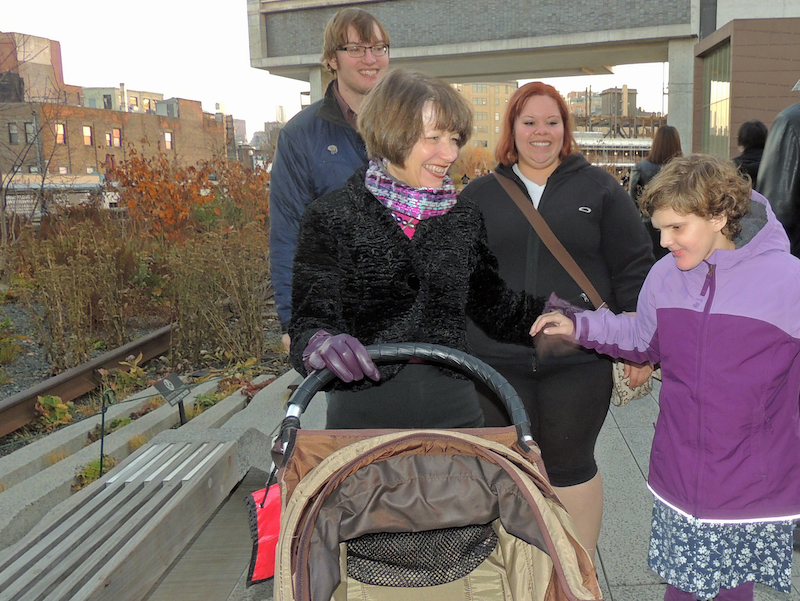
Walking is a great start! Often, people with disabilities lack exercise and are prone to obesity, while families also struggle to get out in the community. Walking is a first step in reversing this.
Margot’s first “trail” was a daily 50-foot walk from her classroom to the main office when she was 7 years old. At first, Margot did not like these walks, but she was determined to earn the praise from the school’s principal and secretary for her trek. We lengthened these walks at school very gradually, and then added short walks at home and in the community. We recently completed our first hike—a 1-mile trail—eagerly accompanied by her puppy.
2. Experiment with equipment to find what works for you.
While spirit is rarely the challenge in getting Margot out on the trail, mobility can sometimes be a hurdle.
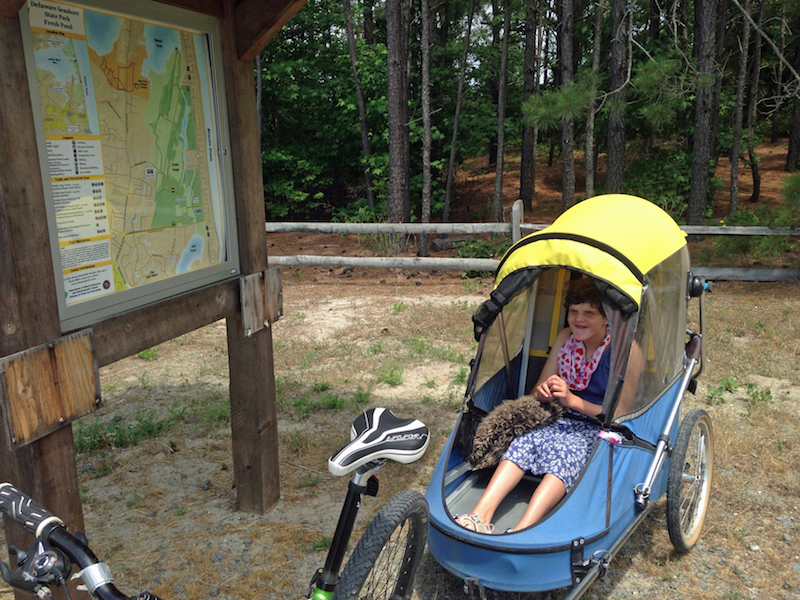
We expanded our trail adventures initially with an ingeniously designed bike trailer from Wike that can be pushed or towed. The first time I towed Margot when she was 10 years old, I worried she might try to jump out, even with the seatbelt. Instead, she immediately clapped and cooed. I have since towed Margot behind my road bike for 25 miles on a rail-trail and behind my mountain bike for 6 miles on a winding forest path (the bumpier the better for Margot!). And I have pushed Margot while rollerblading 8 miles down a rail-trail. Though she is small for her age (at 16 years old, she is not quite 5 feet tall and 100 pounds), it is still a great work out for me!
I was nervous about towing Margot on roads, so I recently tracked down an adapted tandem. The Hase Pino STEPs allows Margot to ride in the more comfortable recumbent position up front while I control the steering. Adapted pedals and a harness help to keep her safe, while an electronic torque assist helps going up long hills.
3. Plan your trip.
Everyone needs to consider the type, length and duration of an adventure, but that becomes particularly important when I’m planning a trip with Margot, as she tires easily and can’t always sustain a long trip.
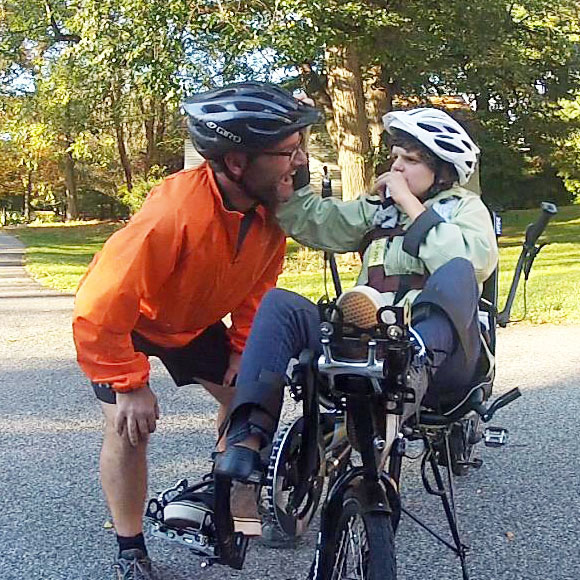
Decide on the length of the trail itself. If Margot is walking, I plan on 1 to 1.5 miles—and less if there are hills or the trail is uneven. If I am the power source, I aim for a 60 to 90 minute segment, or Margot will get too restless. I add a break to longer adventures.
Research your trail. Handicapped parking is required in every lot, but there is no requirement to make the trails themselves accessible, so do your homework on sites like TrailLink.com. Be sure you know if the trail is too bumpy for a road bike or smooth enough to rollerblade, and is without dangerous downhill stretches. When you’re towing or pushing extra weight, what may seem like an insignificant factor or an inconvenience for a solo trip can actually make or break your adventure.
Keep everyone comfortable. Margot’s body does not regulate her temperature well, so Margot needs lots of layers (I add a sleeping bag to her trailer when it is cold). Her arduous manner of walking creates blisters, so she has hiking shoes. She gets a potty break just before and just after, and I make sure she is not hungry before we set off. If I am going to be on the trail for more than an hour, I might bring something to eat or drink. And if you are biking, don’t forget a pump, spare tube and the tools needed to change a flat.
Make a plan based on the weather and how much time you have. Local trails allow us to be home within an hour; other trails might take all day. If Margot is in a good mood, I can be more adventurous. Below 40 degrees? I will bundle her up and push her in her Wike. Above 40 degrees? I will tow her or rollerblade/push her in the Wike. Above 50 degrees? She can walk or we can tandem. Too rainy or too cold to ride? We hop in the car to scout out trails for a later date.
RELATED: Learn more about accessibility in our Trail-Building Toolbox.
4. The unexpected dividends of trails.
Sometimes it can be hard to imagine how to plan a successful adventure for your family with special needs. Experiences can be unpredictable—and feel unsuccessful—making it hard to plan for the next trip. But when the trips are successful, the exercise and shared enjoyment that trails offer can be incredibly powerful and restorative!
Margot does not need words to tell me that she too is captivated by the sounds and smells of nature, just as I was as a child. Once back home, she tells my wife about our adventures through her own language of laughs, coos, claps and stomps.
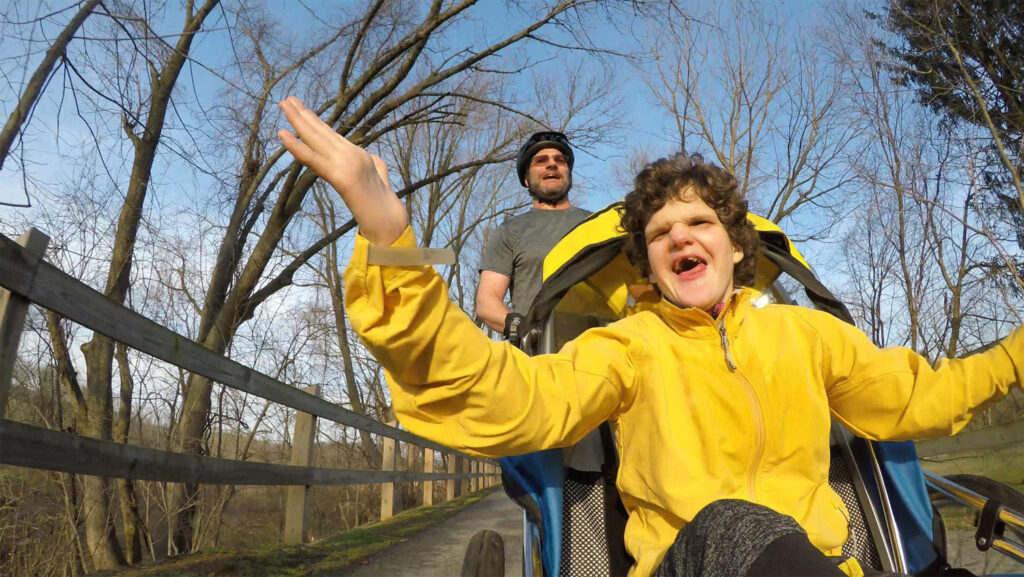
Vacations can disrupt the comforting rhythm of daily routines, and long drives leave everyone restless. Weaving trails into our travels restores this routine. A trail three hours into a long drive stretches our legs and gives us all fresh air. Walkable and bikeable cities are great destinations: Margot and I have biked in New York by the brownstones of Harlem to the East River, beside the colorful boathouses lining the Schuylkill River in Philadelphia, and alongside a 300-year-old canal in downtown Montreal.
Young people with disabilities—like Margot—often require a lot of one-to-one care, which can take its toll on family relationships. In fact, recent reviews of the scientific literature document the impact of caregiving on anxiety, depression, sleep, optimism, satisfaction and physical health. These stressors affect families of children with a wide range of conditions, and across a range of cultures.1 A trail is not only a great way to mitigate these stressors, but is also one of the few activities our whole family can really share. And walking or biking on a trail with friends and extended family gives us a chance to catch up and gives them a chance to enjoy something special with Margot.
You can read more about Margot and about the planning that went into these and other adventures on my website, ASD Roadmaps. A map of the trails referenced in this blog, and other favorites, is also available on Google Maps.
1Dykens, E. (2015). Family adjustment and interventions in neurodevelopmental Disorders. Current Opinion in Psychiatry. 28(2): 121–126.
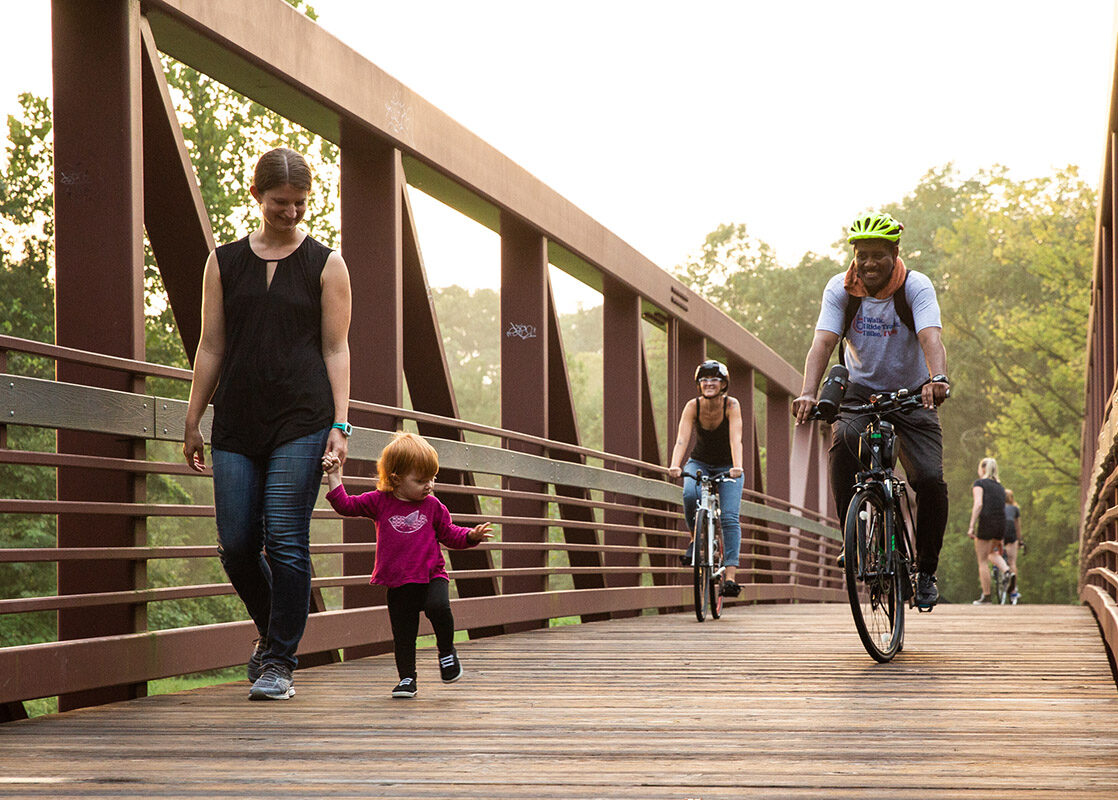
Donate
Everyone deserves access to safe ways to walk, bike, and be active outdoors.
